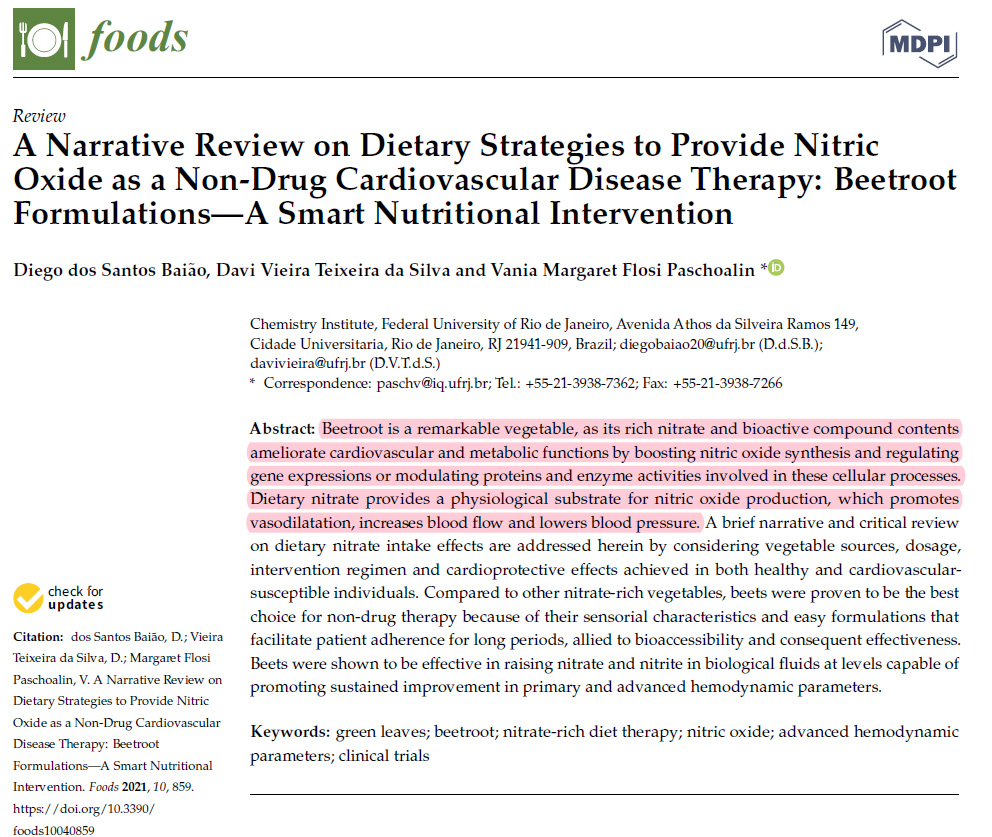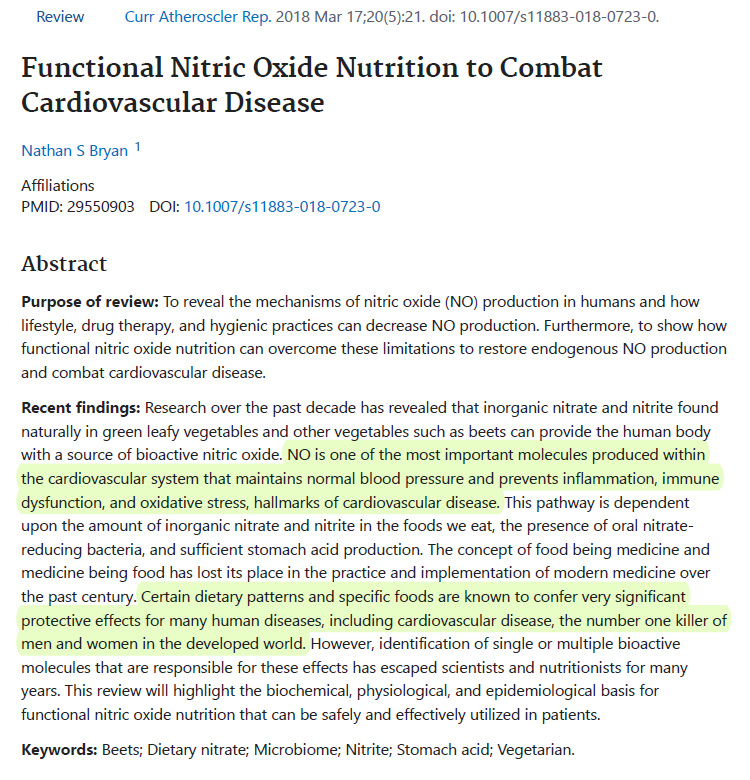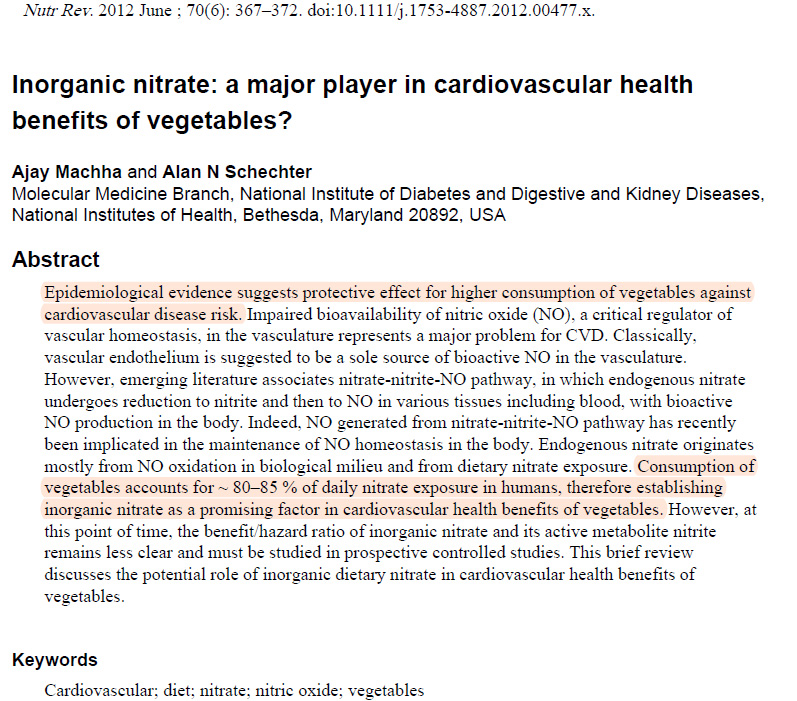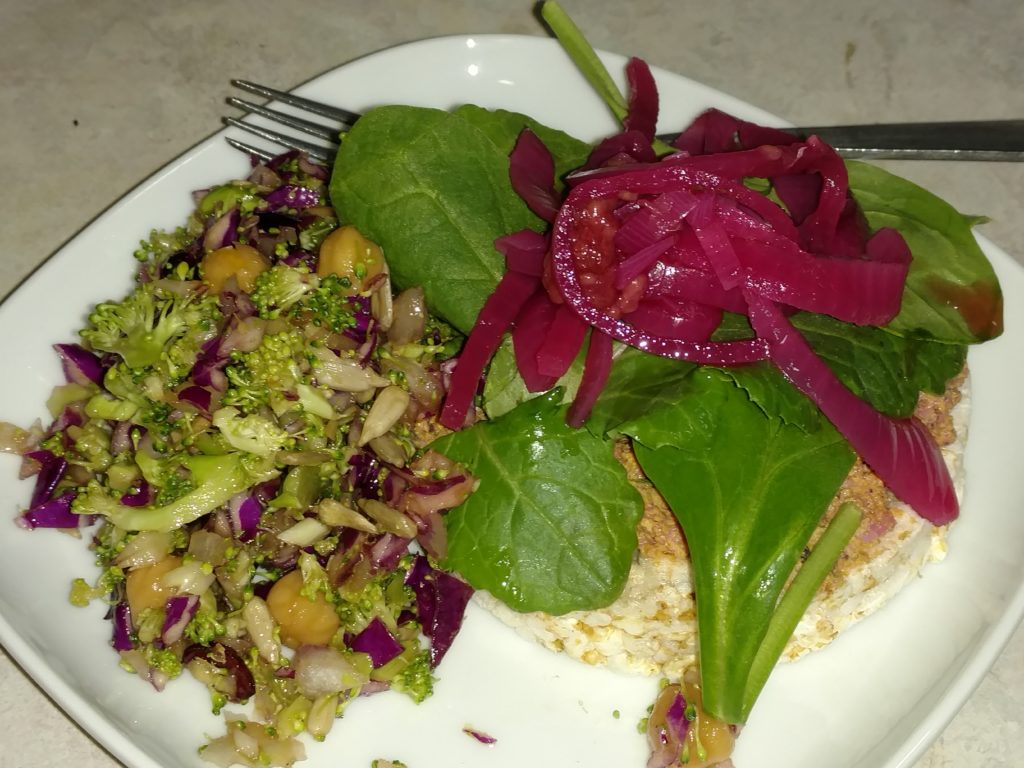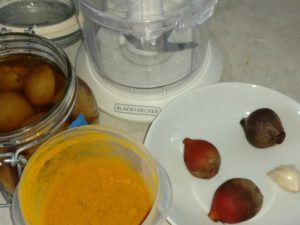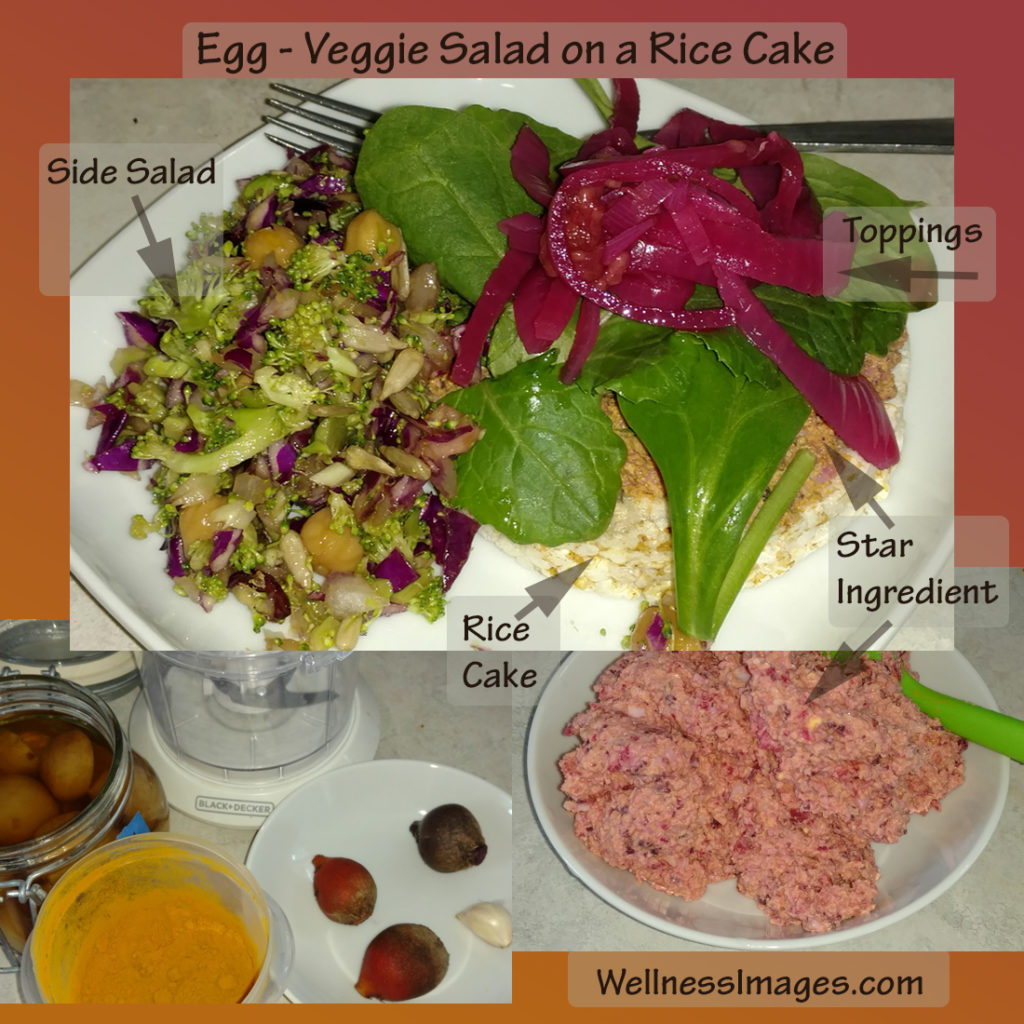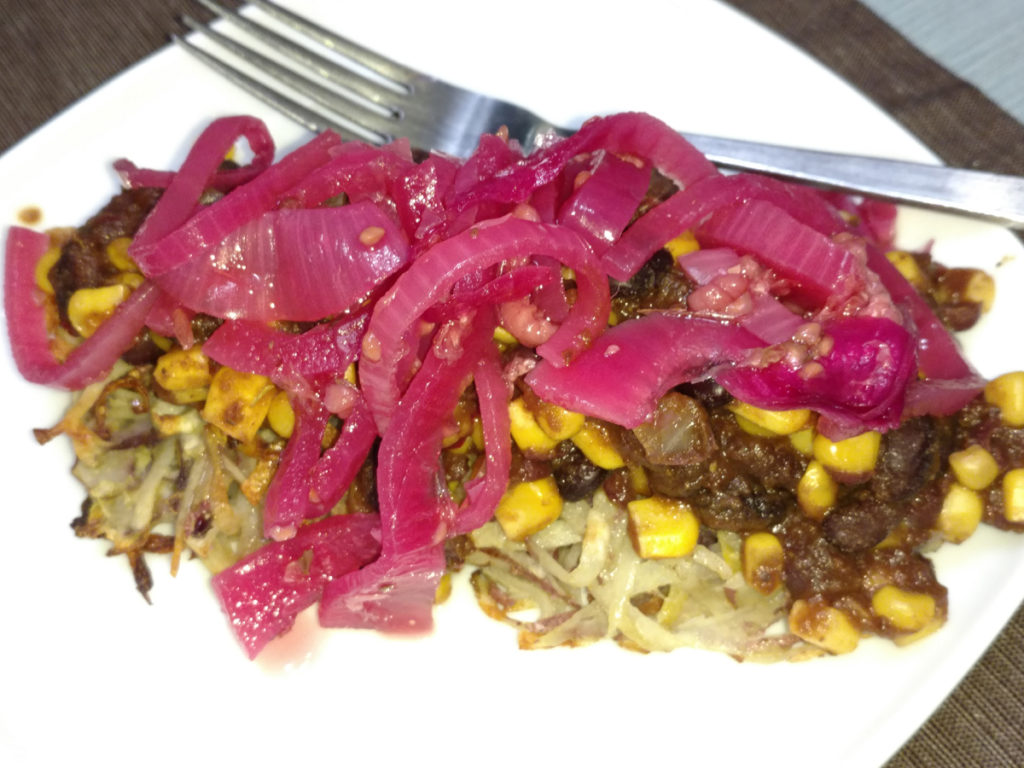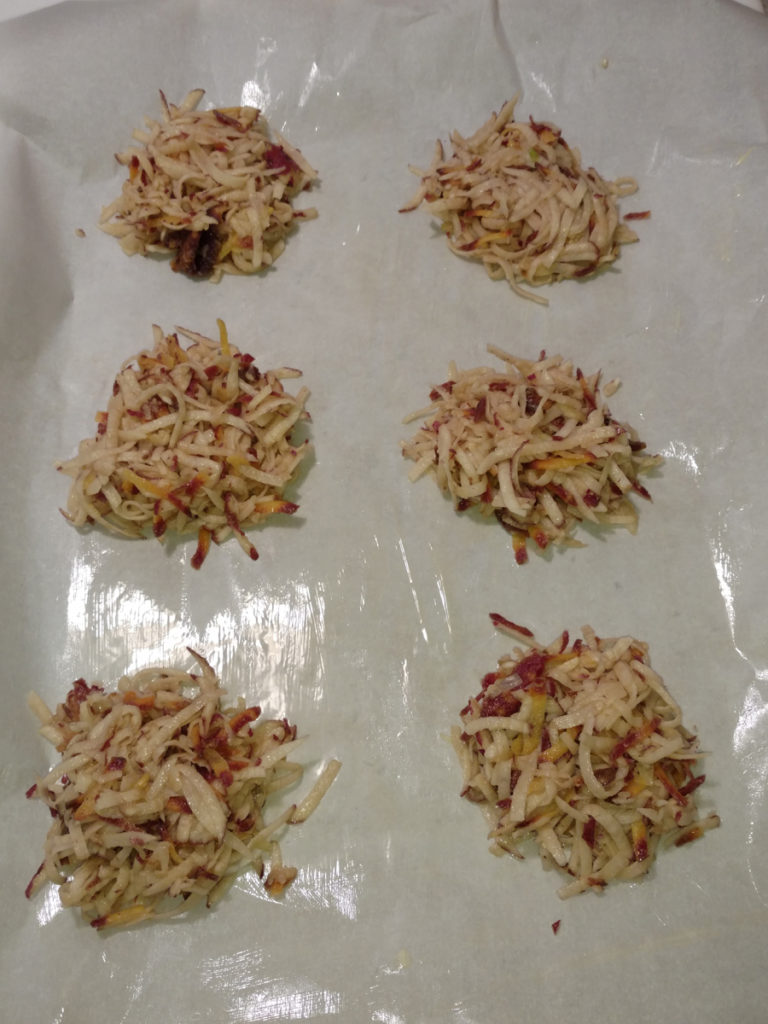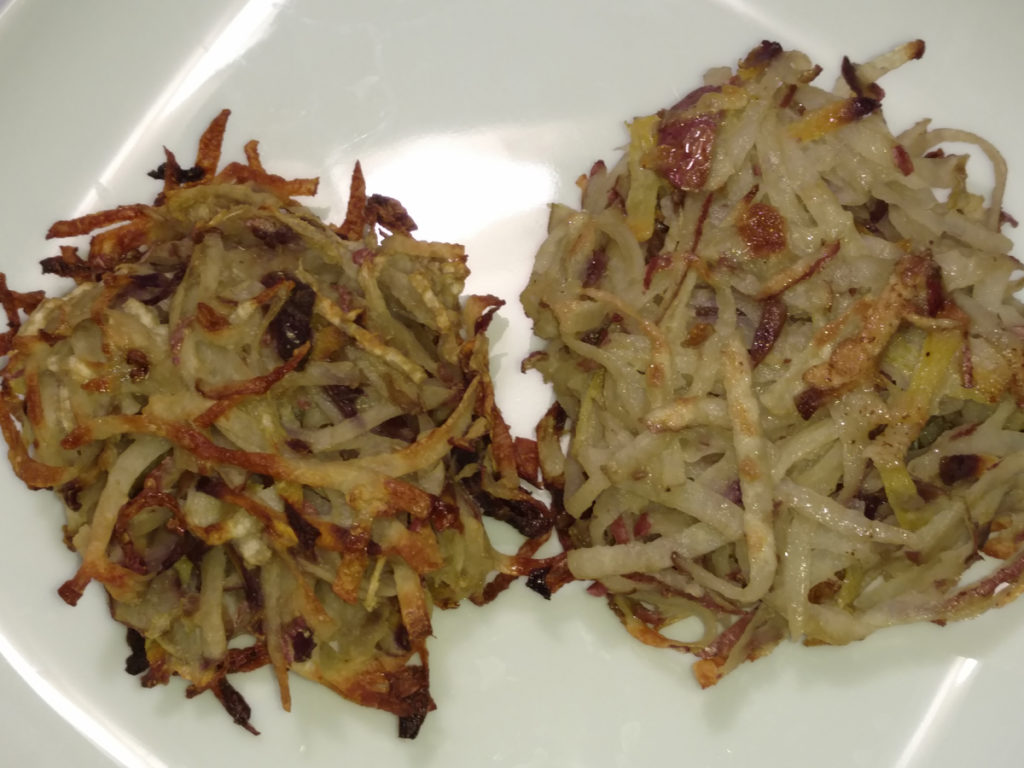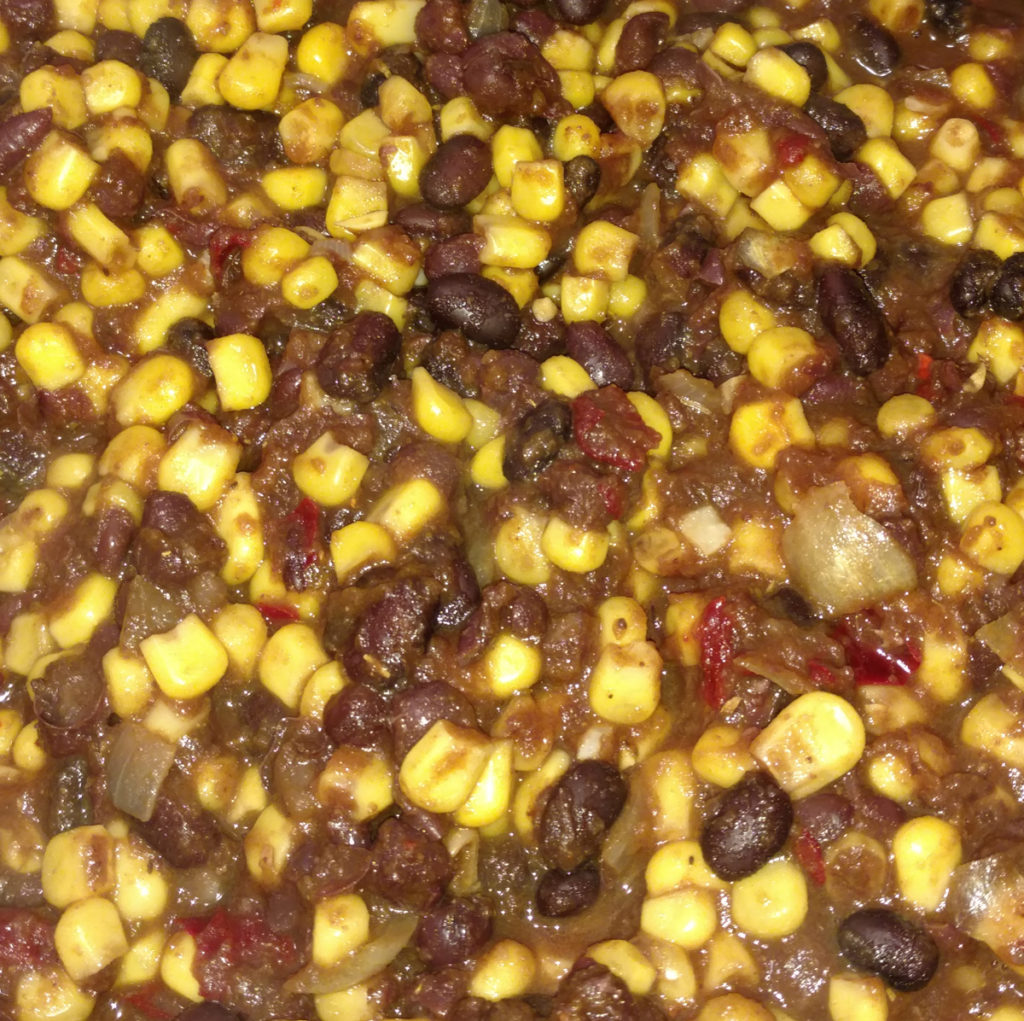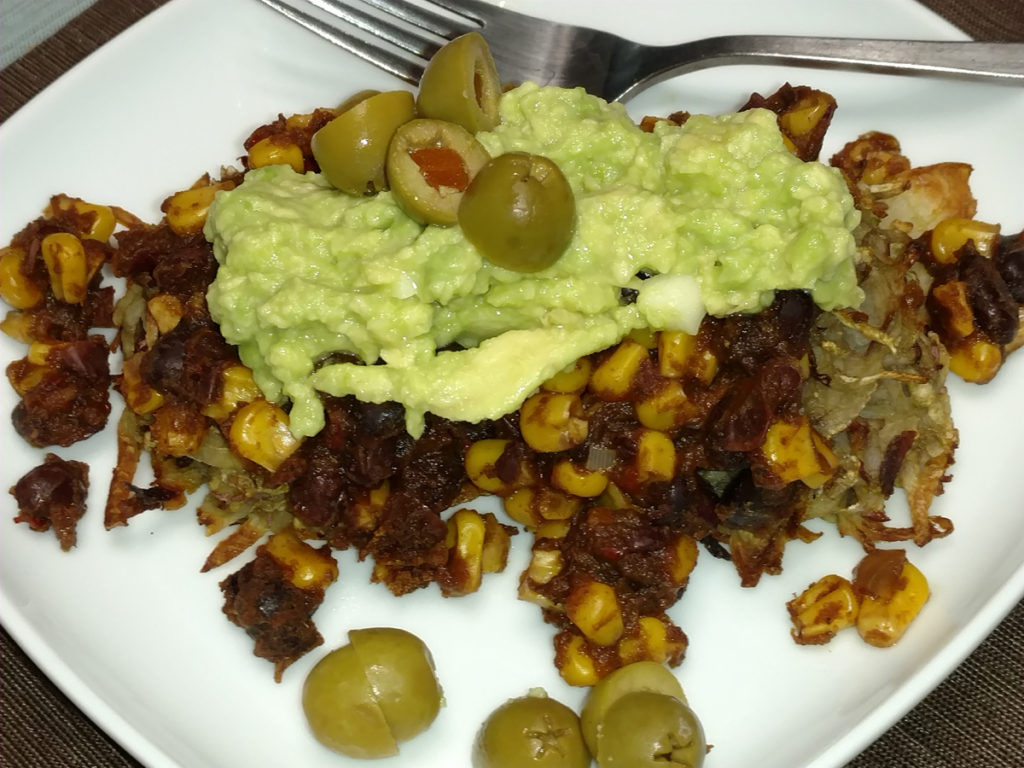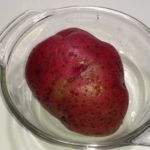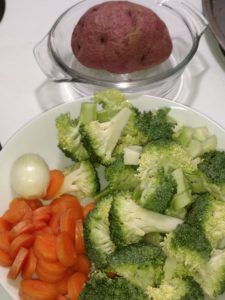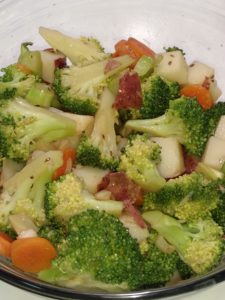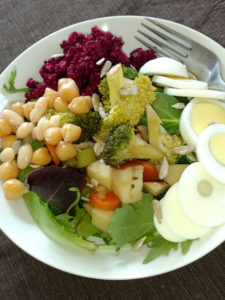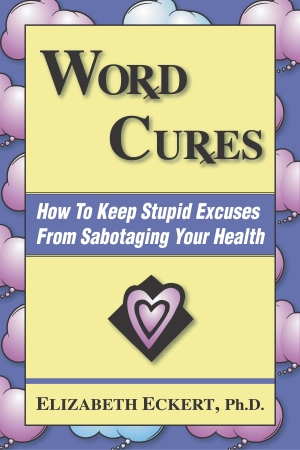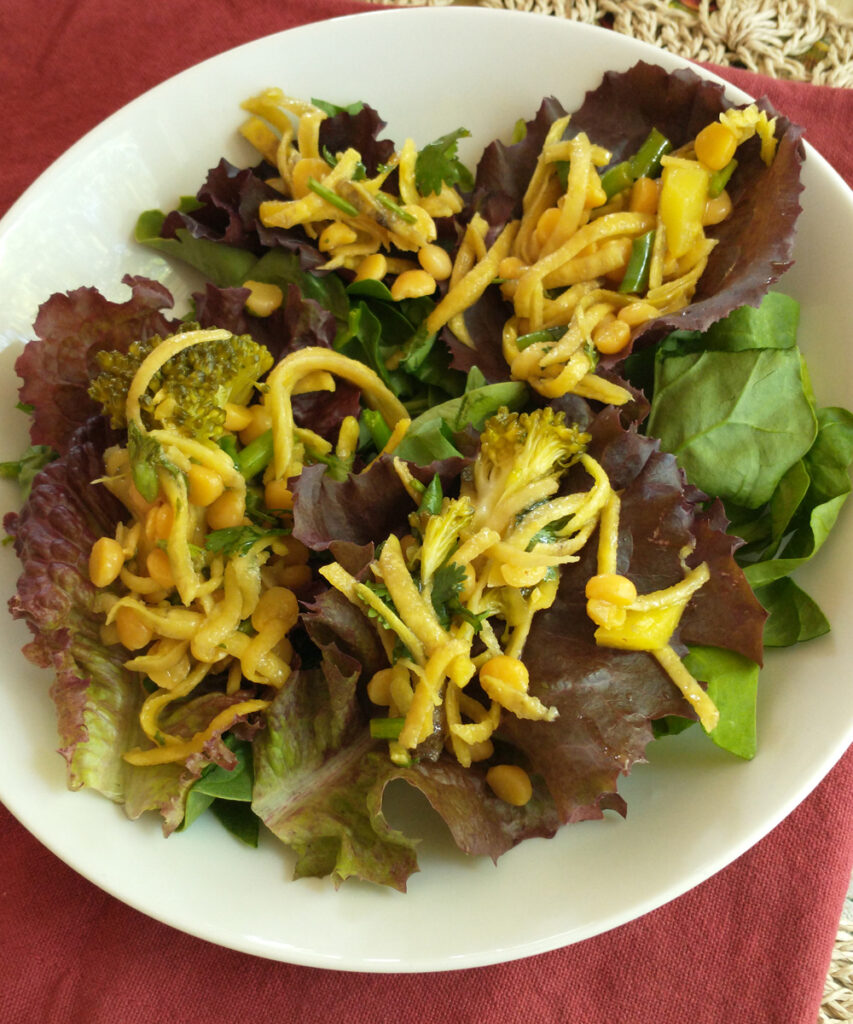
The inspiration for this Beet and Chickpea Salad with Ginger Vinaigrette came on an otherwise uneventful morning walk through the garden. It’s earlier in the season than I have ever harvested mature beets. This year, however, I planted a small stand of beets and chard way back in April. The tops are getting big already. Could it hurt to peek underneath?
Turns out we’re in beets. At least we have a few. Yahoo!!
What can I make with that?
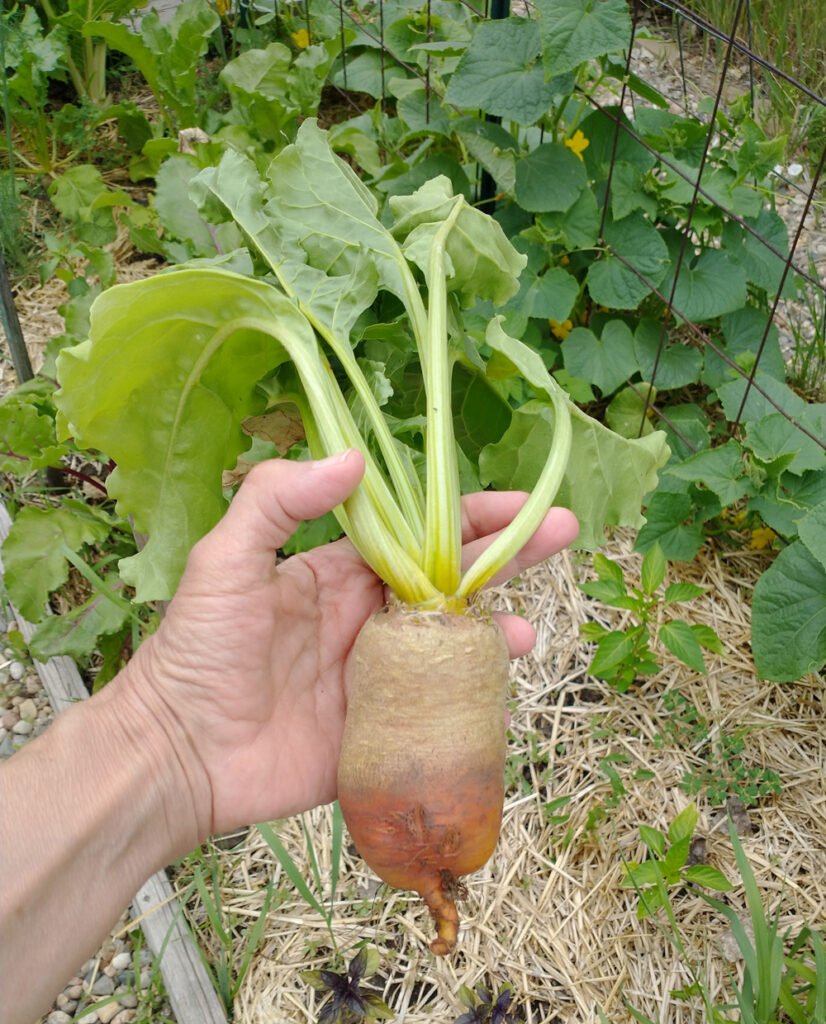
It’s always exciting to begin getting real *food* from the garden. So as I held this delightfully early golden beet in my hand, I asked the universal question. “What can I make with that?” I was in need of something for a few lunches, and I’m biased toward salads.
I reviewed my mental checklist for a successful creative kitchen adventure: something that tastes good, made from healthful ingredients, diversity of plants, source of nitrates, source of polyphenols, satisfying, and satiating. Bonus if I have everything needed on hand.
So what do we have in the kitchen? Chickpeas / garbanzos (whole and split), broccoli, garlic scapes, cilantro, baby spinach leaves, and some beautiful red leaf lettuce just about ready in the garden.
Beet and Chickpea Salad Checks all the Boxes!
This is a lunch to feel good about eating. It tastes amazing; it’s colorful and satisfying. But let’s not stop there. The Beet and Chickpea Salad is super-healthful! Let’s focus on the star player. When it comes to the health of our circulatory system, beets are practically a superfood.
We all know that eating vegetables is good for our health, right? But how? Several ways. Veggies grown under good conditions contain lots of vitamins and minerals. Plant fiber provides an amazing growth medium for the bacteria that makes our gut microbiome healthy. Bright colors provide polyphenols that offset oxidative stress and build the microbiome.
And then there’s nitric oxide, a molecule that, according to a 2018 article by Dr. Nathan Bryan, “maintains normal blood pressure and prevents inflammation, immune dysfunction, and oxidative stress, hallmarks of cardiovascular disease.”
Many vegetables support healthy nitric oxide metabolism, and one of the top players is the lowly beet. Authors Diego dos Santos Baiao and team (2021) suggest that beets are one of the best food-based sources of nitric oxide’s cardioprotective benefits. They’re relatively easy to obtain and can also be prepared in various ways that people enjoy consuming. Yum!!
A brief word of caution: If you find it necessary to limit oxalates in your diet, heads up! Beets are a relatively high oxalate food, so take that into consideration in your meal and portion planning.
It feels so good to get our creative vibe flowing! Let’s get started!
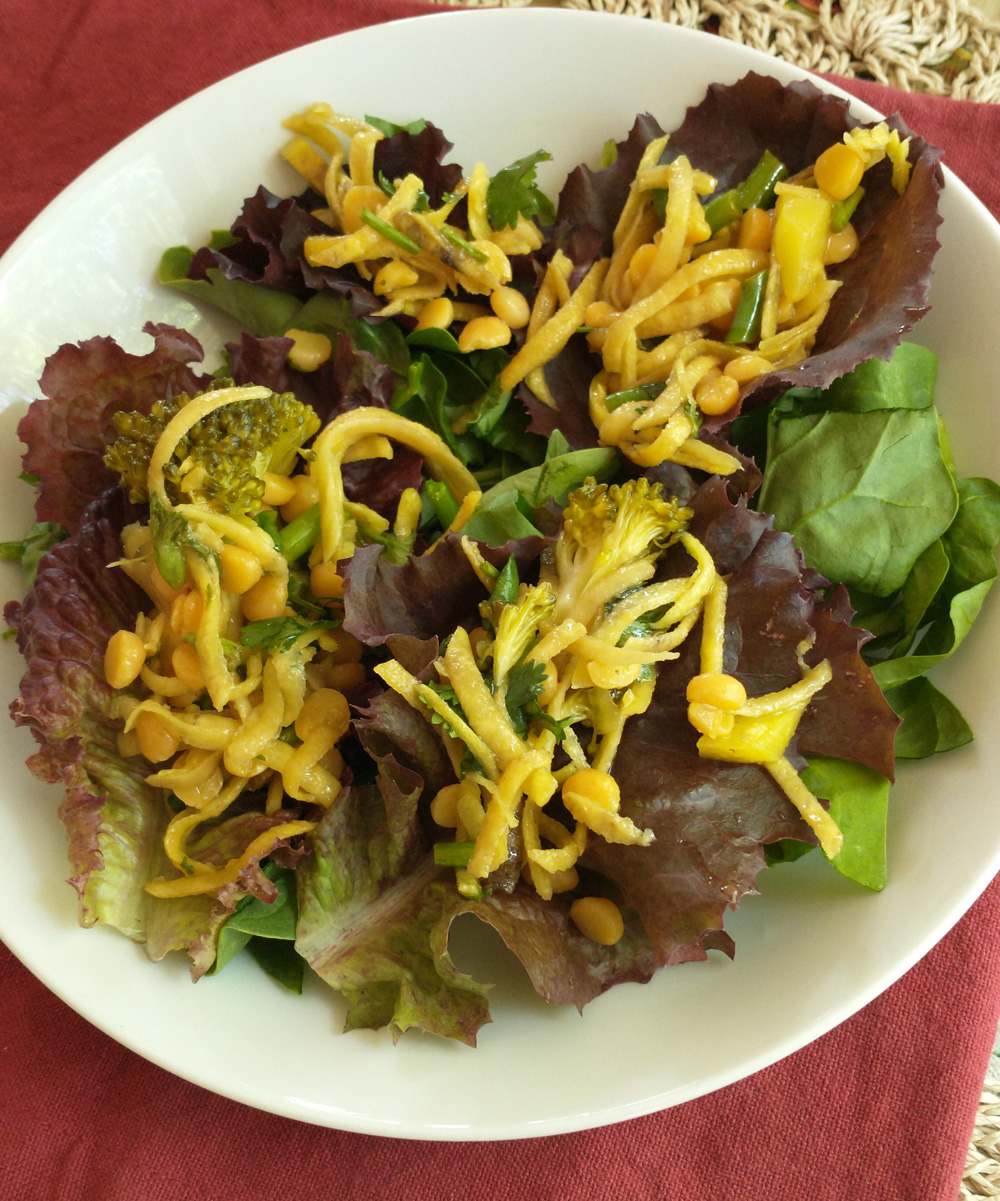
Beet and Chickpea Salad with Ginger Vinaigrette
Equipment
- Food processor
- Stove
Ingredients
- 1 medium beet, raw washed, peeled, greens removed
- ½ cup chana dal / split chickpeas pre-soaked
- 1 head broccoli cut into florets
- 3 garlic scapes sliced into 1/2" pieces; green part only
- 2 tbsp fresh cilantro
For the dressing
- ¼ cup olive oil extra virgin
- ¼ cup red wine vinegar
- 1 tbsp ginger juice
- 1 tsp prepared brown mustard
- 1 tsp maple syrup
- salt to taste
Instructions
- Soak split chickpeas in water at least 1 hour. To shorten soaking time, bring water to a boil and then remove from heat.
- Drain chickpeas. Place in a small saucepan. Cover with fresh water. Bring to a boil. Reduce heat to low and cook for 30-40 minutes or until soft.
- Peel beet. Shred raw beet using food processor. Place in medium bowl.
- Blanch broccoli florets in a small amount of boiling water until bright green – one to two minutes. Drain and either plunge florets into ice water or place in colander and run under cold water. Place drained florets in bowl with shredded beet.
- Add sliced garlic scapes and lightly chopped cilantro to bowl.
- When chickpeas are cooked, drain and rinse in cold water. Add to bowl.
- In a separate small bowl, mix olive oil, red wine vinegar, ginger juice, mustard, maple syrup, and salt to taste. Stir or whisk to combine.
- Pour dressing over beet mixture and toss to combine.
- Refrigerate for a few hours or overnight.
- Serve on mixed greens or in "lettuce cups."
Notes
- Red or golden beet can be used.
- To substitute whole dried garbanzo beans for split chickpeas, increase bean cooking time to 1-1/2 hours. Or substitute canned garbanzo beans, drained and rinsed.
- Garlic scape alternative: add one clove minced or crushed garlic to the dressing.
- Substitute 1 tsp grated fresh ginger root for the ginger juice.
- I used Ginger People ginger juice. Santa Cruz Organic also produces a ginger / lemon blend which should also work in the recipe, though not as an exact substitute. It’s more widely distributed. If you try it, let me know what you think! Ginger can also be juiced at home in a juicer.
- Optional toppings: sunflower seeds, feta cheese (not vegan).
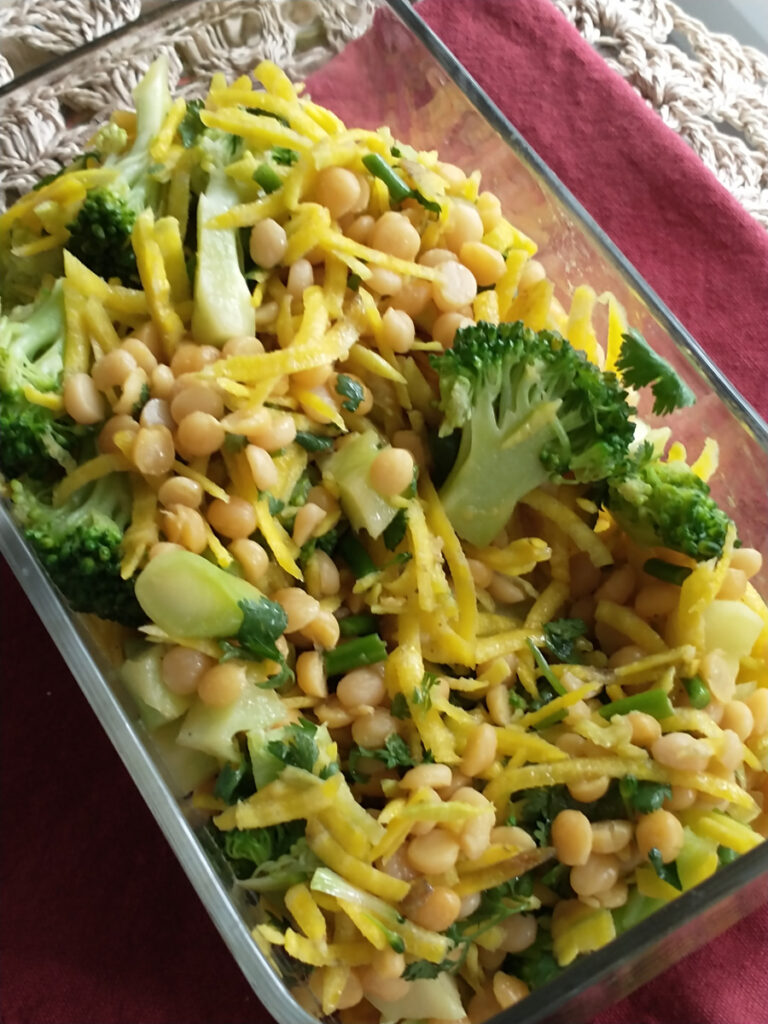
Resources
Dos Santos Baião, D., Vieira Teixeira da Silva, D., & Margaret Flosi Paschoalin, V. (2021). A Narrative Review on Dietary Strategies to Provide Nitric Oxide as a Non-Drug Cardiovascular Disease Therapy: Beetroot Formulations-A Smart Nutritional Intervention. Foods (Basel, Switzerland), 10(4), 859. https://doi.org/10.3390/foods10040859
Bryan N. S. (2018). Functional Nitric Oxide Nutrition to Combat Cardiovascular Disease. Current atherosclerosis reports, 20(5), 21. https://doi.org/10.1007/s11883-018-0723-0
Machha, A., & Schechter, A. N. (2012). Inorganic nitrate: a major player in the cardiovascular health benefits of vegetables?. Nutrition reviews, 70(6), 367–372. https://doi.org/10.1111/j.1753-4887.2012.00477.x
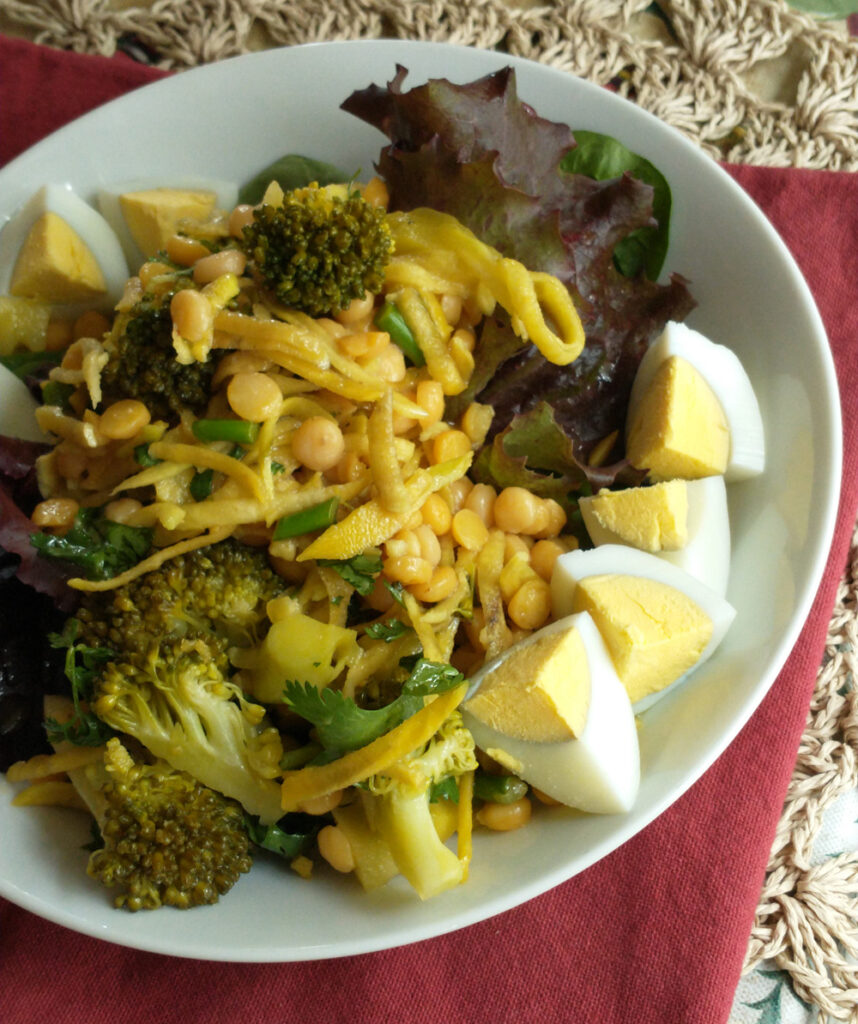
Elizabeth Eckert is a functional health practitioner who learned to appreciate vegetables and creative home cooking very early in life from her health-conscious mom. She enjoys growing a seasonal garden at her home in North Dakota. Elizabeth supports people in learning to maintain healthy microcirculation, microbiome, and mineral balance so they can thrive in life! Distance consultations are available. Tap for info on Functional Health Consulting.

